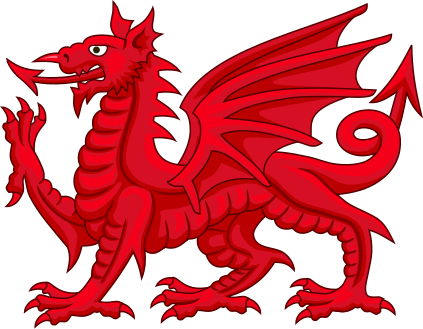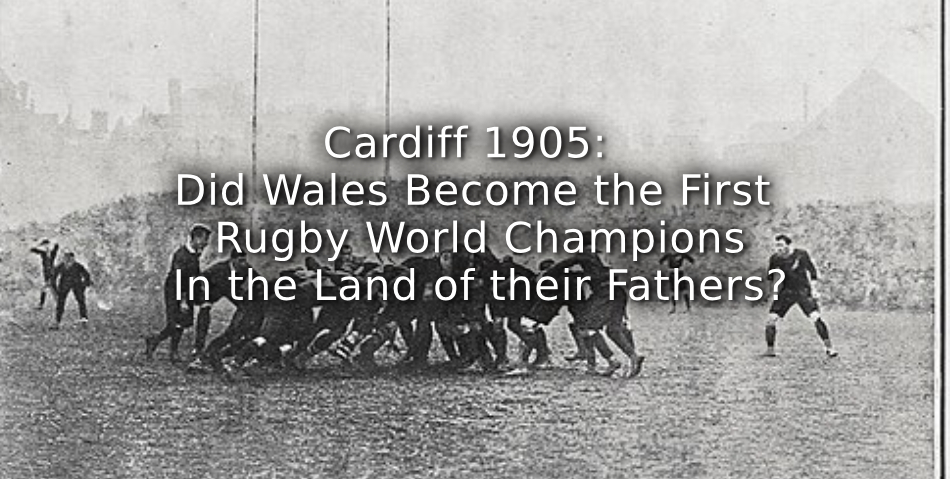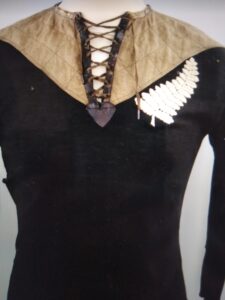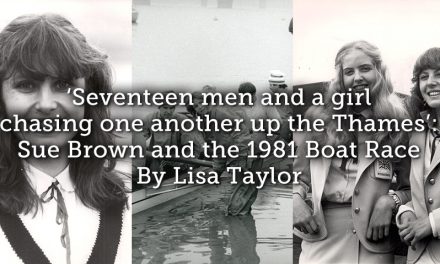One hundred and twenty years ago Wales beat The New Zealand ‘All Blacks’ for the first time at Cardiff Arms Park in what became known as ‘The Match of the Century.’

A souvenir programme from the match in December 1905
Heading into the match the tourists known as ‘the originals’ had won 27 consecutive matches which included beating England, Ireland, Scotland and Australia and were strong favourites to win.
Wales were also in their first ‘Golden Era’ and were considered to be the strongest team in the Northern Hemisphere, so for many the match was seen as the ‘unofficial championship of the rugby world.’
The popularity of the match that attracted over 45,000 spectators, suggested to many that this was a match that was about something greater than just a game of rugby and that national pride was very much at stake.
Wales were the current holders of ‘The Triple Crown’ and contained in their ranks, great players such as Rhys Gabe, Willie Llewellyn and Teddy Morgan, who had all toured with the British Isles team in New Zealand the previous year and were well aware of the threat the tourists posed.
-
Wales
Credit: Willis Studios, Cardiff, Public domain, via Wikimedia Commons
-
The All Blacks
Credit: E. Kelley, Public domain, via Wikimedia Commons
In the weeks leading up to the match, the Welsh had arranged two full ‘trial matches’ and a settled ‘Probables’ team seemed to be emerging, but more importantly the trials had solved the problem of whether to play seven or eight forwards; Wales decided to use a seven forward formation( 2-3-2) also used by the New Zealanders, rather than the traditional eight man British scrum, which allowed them to counter the tourists weight advantage by having a ‘free’ player to either support the play or retreat into the back row if needed.

The 2-3-2 scrum
Credit: Public Domain via Wikipedia Commons
As had already become tradition, the New Zealanders performed, ‘The Haka’ (first seen on the 1888/9 tour to the UK) prior to the kick off, but unbeknown to the tourists and the crowd, in a pre-planned move by the Welsh team reputedly instigated by Teddy Morgan, they began to sing the anthem ‘Hen Wlad Fy Nhadau.’ ( Land of My Fathers) in the hope that the crowd would join in.

Dr. Teddy Morgan in Wales jersey (c 1905)
Credit: Rugby pioneers, CC BY-SA 2.0 via Wikimedia Commons
They soon did and the sound echoed around the stadium, marking what was the’ first recorded instance of a ‘’national anthem’’ being sung at the start of an international sporting event’, something that has now become an integral part of all international sporting competitions.
The anthem, which was less than 50 years old in 1905, was composed by father and son, Evan James and James James, from Pontypridd in 1856 and was written as ‘a declaration of love and loyalty to Wales’; the original title was ‘Glan Rhondda’( banks of the Rhondda) and according to one story, the younger James composed the tune during a walk along the riverbank, where the Rhondda runs into the Taff.
Two years later in 1858, it reached national recognition by being performed at the Llangollen Eisteddfod and was published soon after and quickly became accepted as ‘Wales’s unofficial anthem’; to this day, the anthem has never actually been established by law, because Wales is part of Great Britain which has ‘God Save the King’ as its official anthem. However, in 1975 sports officials in Wales decided that ‘Hen Wlad Fy Nhadau’ should be sung alone at Welsh sporting events, solidifying its role as the country’s ‘National Anthem.’
This powerful display of Welsh identity and unity on that day, is considered by many as a pivotal symbol of the countries’ distinctive cultural identity and was a way of reinforcing ‘Welshness’ in the face of the cultural pressures of ‘English Rule’ at that time, which was threatening the Welsh languages’ very existence.
‘The fact that it was sung in Welsh’, notes David Horspool in ‘More Than a Game’ (2023) ‘was a clear sign of a nation staking its claim to a separate identity, at a time when the speaking of Welsh was declining’.
With both teams equally matched, it was Teddy Morgan’s first half try ( worth only 3 points in 1905 and unconverted) that struck the damaging blow and despite a controversial incident involving the New Zealand three quarter Bob Deans, who was brought down ‘inches from the line’ believing he had scored, Wales held on to claim an historic victory, winning 3-0.
- Welsh Jersey {Image in the Public domain CC BY 2.0]
- All Blacks Jersey {Image in the Public domain CC BY 2.0]
The result, despite the controversy was seen by many as a thoroughly deserved victory against formidable opponents and ‘The Western Mail ‘declared that ‘The prestige of Wales has been enhanced tremendously as a nation possessed of those splendid qualities- pluck and determination.’
Despite the defeat however, the New Zealanders returned home as ‘national heroes’ as, according to Tony Collins in ‘The Oval World (2015),
‘The tour had made rugby the single most important cultural symbol of their nation and the All Blacks became the embodiment of the strength that they believed their nation possessed; in the decades that followed, the deeds of the 1905 tourists became part of the national mythology’.

medal which was presented to each player after the match, which is now kept in Cardiff Museum
The victory for Wales capped off an unbeaten year and the win against New Zealand, who many considered to be the best team in the world at that time, placed them at the pinnacle of world rugby and they could therefore, rightly consider themselves to be ‘Rugby World Champions’, albeit unofficially and no one could now argue that rugby was not the national sport of Wales; it would however, take until 1987 for World Rugby to introduce ‘The Rugby World Cup’ which was won by New Zealand, with Wales finishing in third place.
The iconic match in Cardiff in 1905, established both Wales and New Zealand as major forces in world rugby and remains a pivotal moment in the history of both nations, showcasing the deep connection between the sport and their national identity.
Perhaps more importantly however, was the singing of the anthem by the Welsh players and the crowd that day, which sparked a tradition that spread globally as a symbol of unity and set the groundwork for the modern practice of singing national anthems before all international sporting events and medal ceremonies, which has become so important as a powerful expression of national pride today.

When the Dragon Roared
Wales 3 New Zealand 0
December 16th 1905
‘World Champions?’
Credit: Sodacan, CC BY-SA 3.0 <https://creativecommons.org/licenses/by-sa/3.0>, via Wikimedia Commons
Article copyright of Bill Williams









